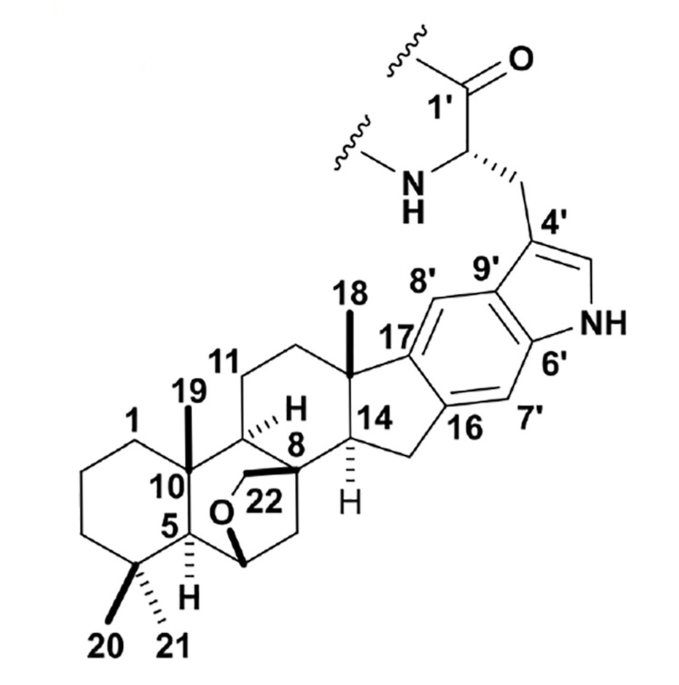New Chem paper by the Piel lab on a new steroid-like posttranslational peptide modification in bacteria
Ribosomal peptides with polycyclic isoprenoid moieties

Isoprenoid modifications of proteins and peptides serve fundamental biological functions and are of therapeutic interest. While C15 (farnesyl) and C20 (geranylgeranyl) moieties are prevalent among proteins, known ribosomal peptide prenylations involve shorter-chain units not exceeding farnesyl in size. To our knowledge, cyclized terpene moieties have not been reported from either biomolecule class. Here, we used targeted genome mining and heterologous pathway reconstitution to identify ribosomally synthesized and post-translationally modified peptides (RiPPs) with elaborate, cyclized geranylgeranyl modifications. The installing maturases commonly feature fused prenyltransferase-terpene cyclase architectures. We characterized two bifunctional maturases with distinct prenyltransferase folds and identified the terminal product of a cyanobacterial proteusin as an exceptionally complex pseudosteroid-annelated polycyclic peptide. Bioassays suggest modest anti-cyanobacterial activity with the modification being crucial for activity. Genome data predict cyclic isoprenoid units for various RiPP families, including proteusin, Nif11, and lasso peptides, and thus the broader natural and biotechnological compatibility of the maturase system.
Hubrich et al., Chem, 2024, doi.org/10.1016/j.chempr.2024.07.026